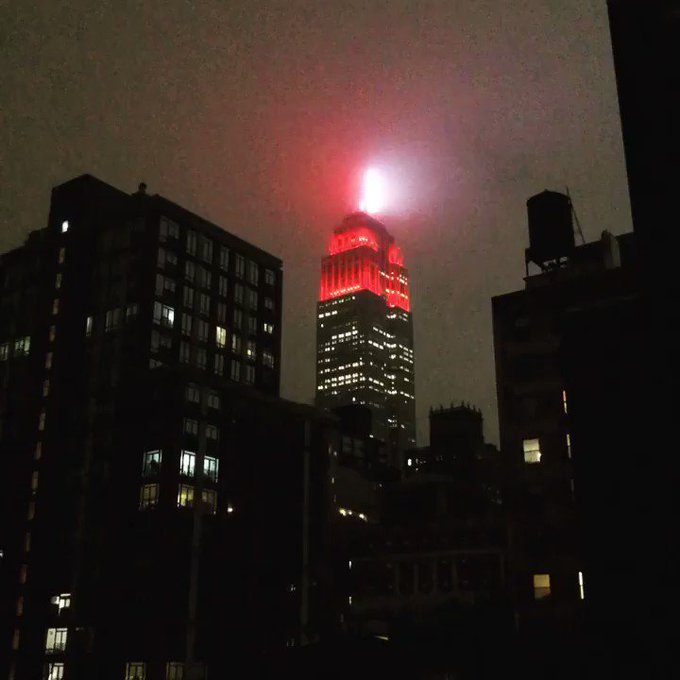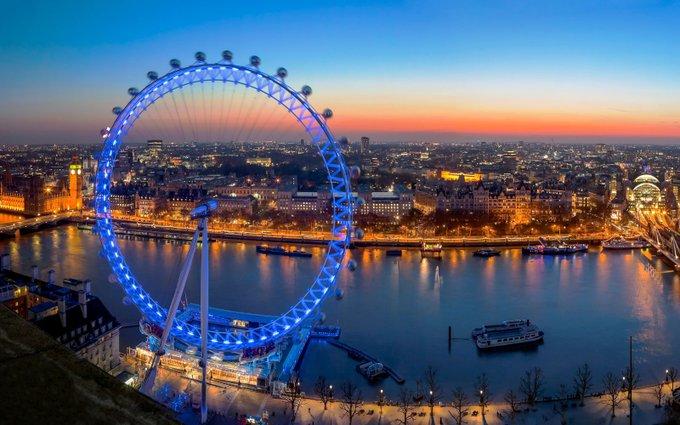Furloughs at Gap, Macy’s and Gannett signal mounting economic distress
A Macy's department store in a N.J. mall is closed to help prevent the spread of the coronavirus. (Justin Lane/EPA-EFE/Shutterstock)
Major companies signaled a new wave of economic distress Monday, sending hundreds of thousands of workers home without pay, as the Trump administration scrambled to get stimulus money to Americans already feeling the weight of unpaid bills.
Macy’s announced it will furlough most of its 125,000 workers as sales evaporated with the shuttering of 775 stores. Kohl’s and Gap also announced furloughs of about 80,000 each. Media giant Gannett announced furloughs for newspaper employees who earn more than $38,000 a year and pay cuts across the company. Sysco Corp., the country’s largest food distributor, also confirmed thousands of furloughs and layoffs of undisclosed numbers of workers worldwide.
The massive cuts have prompted some economists to predict the unemployed could top an eye-popping 40 million by mid-April, with deep economic consequences for workers struggling to make rent and mortgages amid public health isolation orders.
The tanking economy has ratcheted up the pressure on the Trump administration to turn the largest stimulus package in American history into immediate relief for businesses and workers. The Treasury Department, in particular, faces a staggering list of tasks as it tries to rapidly create massive new federal programs aimed at shielding Americans from the economic impact.
Empire State Building flashes red and white as coronavirus death toll continues to rise
In a tribute to medical workers battling the novel coronavirus, New York’s Empire State Building flashed red and white on Monday night to symbolize “America’s heartbeat.” Photos and videos of the monument’s new look circulated widely on social media.
“The @EmpireStateBldg reminding us that the city is in the middle of an emergency,” tweeted writer Rita J. King, who was sheltering in place on Monday evening.
The @EmpireStateBldg reminding us that the city is in the middle of an emergency
“Starting tonight through the COVID-19 battle, our signature white lights will be replaced by the heartbeat of America with a white and red siren in the mast for heroic emergency workers on the front line of the fight,” the Empire State’s official Twitter account wrote Monday.
The building is not the only monument changing colors during the crisis.
Last week, Britain’s London Eye lit up blue, to pay tribute to the country’s national health-care system and its workers. The same evening, thousands stood out on their doorsteps to applaud the emergency services in a nationwide tribute entitled “clap for our carers.”
We’ll be supporting #ClapForOurCarers by lighting up the capital in a bold NHS blue this Thursday 26th March at 8pm, you can show your love by giving the biggest applause from your windows as part of this fantastic campaign.
Earlier this month, Dubai’s famous Burj Khalifa skyscraper projected the message “stay home, stay safe” to residents in both English and Arabic. The official Twitter account of the world’s tallest building shared a video of the monument adding “we are all in this together.”
Coronavirus on the border: Why Mexico has so few cases compared with the U.S.
Men exercise March 30 in downtown Mexico City as the coronavirus outbreak continues. (Gustavo Graf/Reuters)
MEXICO CITY — The U.S.-Mexico border has long been a region of contrasts. But people in both countries are puzzling over the latest one: The number of confirmed cases of the novel coronavirus on the Mexican side is just a small fraction of the U.S. count.
On Sunday, confirmed cases in California topped 6,200, compared with just 23 in Baja California. Arizona had 919 cases, dwarfing the 14 in neighboring Sonora. New Mexico reported 237 cases; in Chihuahua state, there were six.
The U.S.-Mexico border is the busiest in the world, with an estimated 1 million legal crossings per day. The neighbors’ economies are intertwined.
So why is there such a big difference in cases?
The disparity reflects, in part, a time lag. Mexico did not report its first case until Feb. 27 — a month after the virus was detected in the United States. To date, the country has counted 993 cases, less than 1 percent of the U.S. total.
But Mexico is also pursuing an unorthodox strategy. It is relying less on tests, and more on its own disease modeling, to guide its response to the pandemic. Authorities are wagering that they can fine-tune their response to the virus, even as it has outwitted health officials in the United States and Europe.
As Wuhan reopens, China revs its engine to move past coronavirus. But it’s stuck in second gear.
A woman rides her scooter along a street in Wuhan on Tuesday. (Noel Celis/Afp Via Getty Images)
Residents of Wuhan, the Chinese city where the coronavirus began, are emerging into the daylight after 10 weeks confined to their apartments, unable to exercise, shop for groceries or walk their dogs.
The subway and intercity trains are running again. Shopping malls and even the Tesla store are reopening. State-owned companies and manufacturing businesses are turning on their lights, with everyone else to follow.
“I’ve been indoors for 70 days. Today is the first time that I came outside,” one woman who ventured into a mall this week told local television.
China’s leaders say the country has largely won the battle against its outbreak, reporting each day that domestic transmissions are negligible or nonexistent. The gradual reopening of other parts of Hubei province, and now of Wuhan, the provincial capital, is testament to that.
But winning the war is proving to be a tougher proposition. That involves not only preventing a second wave of coronavirus infections, but also restarting the economy. And it’s becoming increasingly clear that officials cannot achieve both things at once.
Saudi Arabia quarantines select neighborhoods in holy city of Mecca
DUBAI — Saudi Arabia is putting several neighborhoods in the revered city of Mecca, home to Islam’s holiest site and focus of an annual pilgrimage, into 24-hour lockdown to combat the spread of the coronavirus, authorities announced Monday night.
The entire country already has a nighttime curfew, which is extended to the midafternoon in several cities. But under the new measure, people will not be allowed to leave these Mecca neighborhoods for 24 hours until further notice “when it is confirmed that there are no cases that require dealing with.” Those living in the area will be allowed to leave their homes only from 6 a.m. to 3 p.m. for urgent needs, defined as “health care and groceries.”
Saudi Arabia announced on Monday 154 new cases, including 40 in Mecca, bringing its total to 1,453. Eight fatalities have been reported.
Mecca is home to the Great Mosque surrounding the Kaaba, the cube-shaped structure that all Muslims pray toward and must visit at least once in their lives if possible. With the onset of the pandemic, Saudi Arabia closed the doors to the mosque and suspended the umrah, or year-around pilgrimage to Mecca.
The annual hajj, the main pilgrimage, is set to take place in late July, and there has been no word about its suspension.
Saudi King Salman, meanwhile, has said that all citizens and residents — even those in violation of their visas — will receive medical care for ailments related to covid-19 free of charge.






Yorumlar
Yorum Gönder